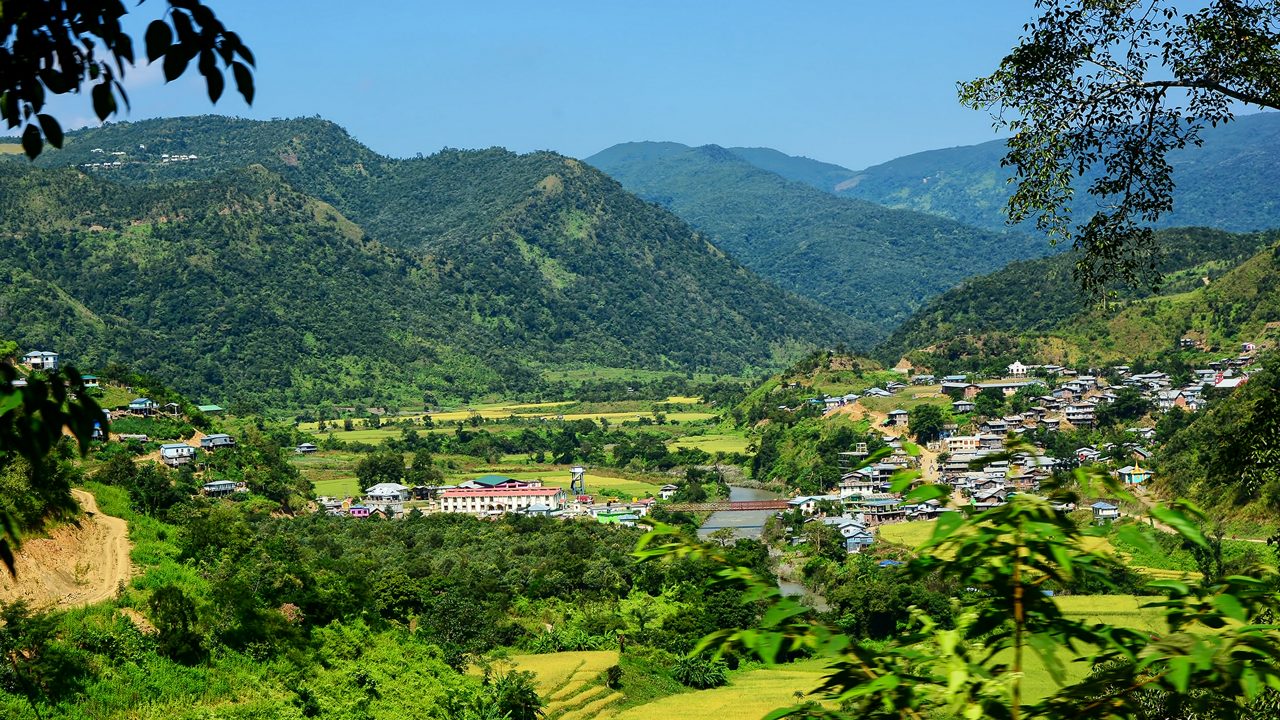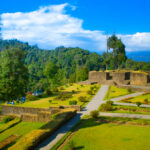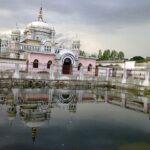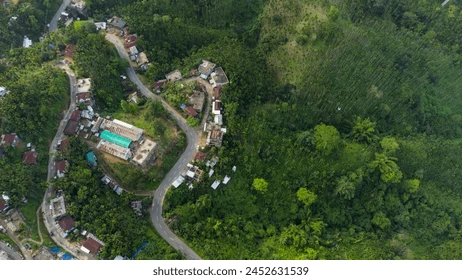Now Reading: Top 5 Best Places to Visiting in Champhai – Lakes, Caves & Cultural Gems
-
01
Top 5 Best Places to Visiting in Champhai – Lakes, Caves & Cultural Gems

Top 5 Best Places to Visiting in Champhai – Lakes, Caves & Cultural Gems
1.Rih Dil

Rih Dil rests 22 kilometers inside Myanmar borders of the Indo-Myanmar frontier and reveals its hidden beauty through a heart-shape lake that mystifies both imagination and spirituality.
Rih Dil holds great spiritual importance for the local Mizo people who consider this heart-shaped lake as the route which souls use before finding their final resting place. The heart-shaped lake occupies a central position in tribal folklore since it began serving as essential cultural lore throughout centuries.
The heart-shaped water formation of Rih Dil stretches a kilometer throughout its area while it spans across 70 meters wide therefore it remains small yet captivating. The heart-shaped outline combined with its mysterious water mystery makes it truly special. No outlet or inlet exists to explain the lake’s water source even though its waters stay clear and constant throughout the year. Natural wonders at Rih Dil have inspired numerous unique local stories and myths that deepen its mysterious presence.
Why Visit Rih Dil?
- The site features a minor yet profoundly sacred cultural destination.
- The natural wonder offers an enchanting combination of beauty and perplexity for visitors.
- People should experience the beautiful landscapes of the borderlands between India and Myanmar.
- Experience both the cultural wealth and traditional welcome traditions of the Mizo people.
2.Kungawrhi Puk

Visitors to Champhai town in eastern Mizoram should not miss the opportunity to explore Farkawn village which remains especially compelling for people fascinated by legends along with natural site-seeing and unconventional exploration. By the charming rural town lies Kungawrhi Puk whose mysterious cave attracts visitors because of local stories about its enchantments.
The trip connecting Champhai with Farkawn village showcases breathtaking scenes of lush hills combined with attractive rural views throughout the journey. The significant location of Farkawn village within its region serves as one of the major settlements with an active cultural scene alongside sweeping hill views.
The wide and deep cavity known as Kungawrhi Puk or “Kungawrhi Cave” appears on the hillside forest near Farkawn. From a distance the natural cavity within the mountainside appears to be a geological formation. To the people of the area Kungawrhi Puk has a spiritual significance beyond its geological identification.
The Mizo people in their folklore understand Kungawrhi Puk as the original entrance to an underground spiritual village. This landmark gets its name from Kungawrhi who legend says became the abductee of evil spirits who placed her deep inside the cave. The Mizo cultural traditions perform her tragic story as part of their performing arts which engages audiences through song and dance expressions.
3.Lianchhiari Lunglen Tlang

The misty Mizoram hills conceal Lianchhiari Lunglen Tlang which carries legendary tales of passionate longing between the couple Lianchhiari and Chawngfianga. Situated only 64 kilometers from Champhai on the Khawbung route Lianchhiari Lunglen Tlang functions as both a viewpoint and a memorable love story of the area.
Lianchhiari visited this dangerous cliff with its projecting rock formation extended from the mountain side as she devoted herself to waiting for Chawngfianga. A romantic story about unending love from Lianchhiari has transcended time as the wind plays her melody across this cliff.
Lianchhiari Lunglen Tlang represents to romantic Mizo inhabitants as much more than pale topography since the landscape paints emotional pictures. The site has become a deeply respected point of interest between locals and visitors because it has continually inspired many lovelorn songs through its history.
Standing at Lianchhiari Lunglen Tlang creates an unreal feeling in people. The endless visibility extends forever into the distance where mountains follow each other continuously while clouds and silence shroud them frequently. From its vantage point the overhanging rock appears suspended between earth and sky because it combines daring attributes with delicate substance. The site enchants visitors both through admiration and tranquility so it functions ideal for those seeking the romantic and cultural heritage of Mizoram.
4. Lamsial Puk

Along the peaceful Farkawn village in Champhai District of Mizoram stands the dark history site known as Lamsial Puk.
From an initial perspective the land looks quiet because lush green hills along with typical Mizoram landscapes surround it. Located within the peaceful area exists a dark cave which contains the horrifying evidence of a violent battle. Lamsial Puk serves as more than a geological structure since it endured one of the deadliest local village conflicts in regional history.
Skeletons That Tell a Story
The significant historical value of Lamsial Puk becomes horrifying because multiple skeletons were discovered piled inside. The warriors from Lamsial village rest in these skeletal remains which are physical proof of the terrible events that unfolded in this place. The skeleton-filled site attracts people who wish to experience Mizoram’s past while simultaneously causing both sympathy and fascination.
5.Vangchhia

Vangchhia in Mizoram’s Champhai district near Myanmar’s border exists as an area masked by historical enigmas as well as thick forests. The landscape featuring rolling hills and thick greenery in this region has become the center of interest for archaeologists and historians who wish to study possible remains from an ancient lost society.
A team of archaeologists ended their substantial site excavation at this location based on directions from the Archaeological Survey of India (ASI). During a Director General ASI site visit in November last year the excavation project started which became a significant advancement in Mizoram’s unexplored archaeological heritage discovery.
The main goal of the excavation involved studying the massive megalithic structures which dominate this region. The region lacks any structures which match the intricate depictions at these sites featuring flora and fauna as well as human figures. The size and intricacy of these structures indicates their status exceeded basic exists or commemoration functions. These artifacts may represent the ancient guardians of what was previously a flourishing community.
The outstanding quality of Vangchhia comes from both its unique architecture and indications pointing to a vanished ancient urban metropolis. The analysts at the site suggest that collection remains indicate an advanced urban development which once operated as a cultural and spiritual center during ancient times. People continue to wonder about this ancient urban center after learning about its potential residence in these remote mountain ranges.
The protective status as an ASI-protected site from the Archaeological Survey of India distinguishes Vangchhia as Mizoram’s sole such site making the recent excavation significant. Ongoing research investigations aim to uncover more information about historical cultures who inhabited northeast Indian regions with the vision to reshape historical knowledge about this area.
Related articles : Top 5 Best Places to Visiting in Aizawl – Hills, Culture & Scenic Views
Stay Informed With the Latest & Most Important News
Previous Post
Next Post
-
 01Top 5 Best Places Visiting in Gyalshing – Monasteries, Lakes & Scenic Escapes
01Top 5 Best Places Visiting in Gyalshing – Monasteries, Lakes & Scenic Escapes -
 02Top 5 Best Places Visiting in Panna – Temples, Waterfalls & Wildlife Escapes
02Top 5 Best Places Visiting in Panna – Temples, Waterfalls & Wildlife Escapes -
 03Top 5 Best Places to Visit in Malerkotla – Malerkotla Fort, Sheesh Mahal & More
03Top 5 Best Places to Visit in Malerkotla – Malerkotla Fort, Sheesh Mahal & More -
 04Top 10 Best Places Visiting in Dakshina Kannad for Culture, Nature & Coastal Charm
04Top 10 Best Places Visiting in Dakshina Kannad for Culture, Nature & Coastal Charm -
 05Top 2 Best Places Visiting in Chitradurga for History, Nature & Adventure
05Top 2 Best Places Visiting in Chitradurga for History, Nature & Adventure -
 06Best Places Visiting in Shopian – Explore Top Attractions & Hidden Gems
06Best Places Visiting in Shopian – Explore Top Attractions & Hidden Gems -
 07Best Places Visiting in Narmadapuram – Temples, Waterfalls & Wildlife Escapes
07Best Places Visiting in Narmadapuram – Temples, Waterfalls & Wildlife Escapes














Pingback: Best Places to Visiting in Kolasib – Tlawng River, Serlui B Dam & More